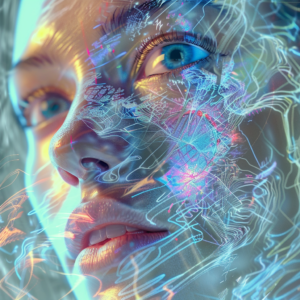The Different Forms of AI: Generative vs Machine Learning

Welcome to the future?
It’s time to stop using the blanket term, AI.
In the rapidly evolving world of artificial intelligence (AI), two forms of AI often emerge as central to the conversation, yet are often referred to under the blanket term, AI. This lack of clarity can have enormous ramifications, ranging from the tools your business is contractually allowed to use to deliver a service, to your business being actively vilified for using tools people believe are replacing worker’s jobs. It is therefore vital that we begin clarifying what we mean by AI. This can be achieved by instead using the terms ‘Machine Learning’ and ‘Generative AI’. Both fall under the AI umbrella but serve distinct purposes and operate on different principles.
How could this affect my business?
According to a trusted senior source in the global VFX industry, a recent tax relief document issued by the UK government contained a critical omission. The document disqualified companies from tax relief if they used AI, but failed to specify that it was referring to Generative AI. This mistake effectively voided any tax relief the industry could receive, as the vast majority of tools studios and individuals use, do use AI, but crucially the type of AI is Machine Learning, not Generative. The omission has now been corrected, but this serves as a stark reminder of the importance of educating ourselves on the various forms of AI. It’s easy to imagine the multitude of ways individuals could wreak havoc on their business, by using incorrect terminology.
What is Machine Learning?
Machine Learning is a subset of AI which is inherently predictive, and the more traditional form you’ve most likely used or been exposed to over the last decade or so. It focuses on developing algorithms capable of extracting insights from data and then making predictions or decisions based on those insights. Its goal is to comprehend and act upon existing data. Traditional Machine Learning methods analyse this data to detect patterns, using these discoveries to predict future results. In essence, it involves teaching a computer to recognize particular data patterns and carry out tasks accordingly. If you’ve used a chatbot on a website, you’ve interacted with ML (with and natural language processing) which mimics conversation. If you’ve played a modern videogame, this is precisely how Nvidia’s Deep Learning Super Sampling (DLSS) and AMD’s FidelityFX Super Resolution (FSR) work in modern video game graphics frame generation.
In the case of DLSS, by analysing samples of previous and current frames, then combining them, machine learning effectively predicts where each pixel in a scene will appear in the next frame which it then generates as a ’filler frame’ based on those calculations, before the graphics card generates the next true frame in the more traditional sense. This can drastically increase the number of frames a game generates each second, improving the gameplay experience and circumventing Central Processing Unit (CPU) bottlenecks in the process. FSR is catching up, but more typically has used machine learning to increase the resolution of an image. Fraud protection is another use, where a model is trained on typical interactions and can then identify unusual activity, significantly faster than a human. If you’ve taken a photo on your phone, the image you see is the result of your phone using ML algorithms to improve the image quality.
What is Generative AI?
Generative AI goes beyond the learning models of Machine Learning. It attempts to mimic human creativity and produce content that is original, yet plausible, by not only learning from data, but also generating new data that resembles the learned information, but which didn’t exist until the AI ‘generated it’. It’s inherently creative and there are many forms its output can take. You’ve undoubtedly seen realistic or artistic images created by Generative AI, but it can also create videos, compose music, write and re-write copy, or even code. We generated the image above simply by typing in the terms ‘Machine Learning’ vs ‘Generative AI’. There is a mesmerising example of this last one, where a developer gets ChatGPT to write the code to re-create the videogame Flappy Bird. He clearly knows what to ask for which makes all the difference, but it’s not hard to imagine a point where even novices will be able to create something playable, through basic commands.
Conclusion
As technology and AI continue to evolve, it is crucial for individuals, employees, and businesses to develop their knowledge and vocabulary. This will not only help avoid potential pitfalls but also ensure that the products and services they provide remain accurate, competitive, and relevant. The potential for both ML and Generative AI to transform industries is immense, promising a future where machines not only learn from us but also inspire us with their creations. It’s up to us all to ensure our businesses are populated by leadership who not only understand this, but also have the ability deliver it.
James Dodd
Martin Tripp Associates is a specialist executive search consultancy. We work globally across the media, information, technology, video games and entertainment sectors, and with some of the world’s biggest brands on communications, digital, marketing and technology roles. Feel free to contact us to discuss.